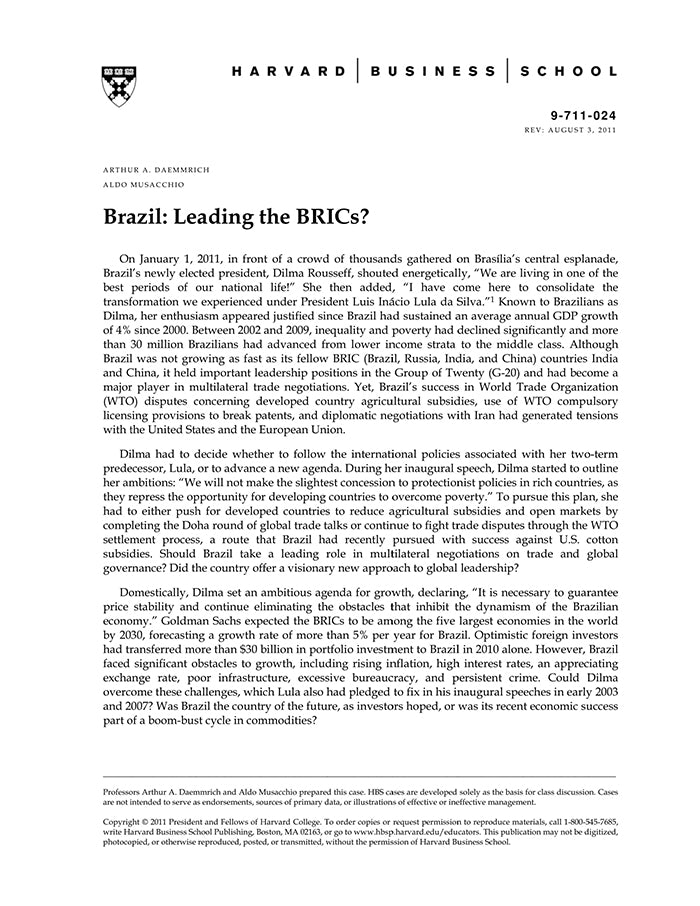Brazil: Leading the BRICs?
受取状況を読み込めませんでした
Brazil's new president, Dilma Rousseff, had announced plans to sustain GDP growth above 5% annually and continue the country's leadership role among emerging economies. Between 2003 and 2010, Brazil benefited from strong economic growth and stable policies under the Lula administration. Brazil also increasingly led the BRICs (the fast-growing countries Brazil, Russia, India, and China) in multilateral negotiations, notably in the World Trade Organization's Doha Round. Yet Brazil's actions to enforce a compulsory license of a patented therapy for HIV/AIDS and its victory in a longstanding WTO dispute with the United States over cotton subsidies had created tensions with major trading partners. Entering office in January 2011, Rousseff had the opportunity to outline a new agenda for international trade. Specifically, she had to decide whether to seek completion of the Doha Round, which was in a stalement due to disputes over global intellectual property rules and agricultural subsidies and tariffs, or to instead pursue regional trade agreements in South and Central America. Rousseff also pledged active government involvement in the economy, described in the case as "Brazilian capitalism," but it was unclear whether fiscal expansion coupled to conservative monetary policies would reduce bottlenecks to growth and further temper Brazil's high inequality.
【書誌情報】
ページ数:24ページ
サイズ:A4
商品番号:HBSP-711024
発行日:2011/2/2
登録日:2011/8/22


